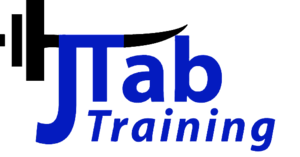I don’t want to look like the Hulk/Arnold/etc.
If I had a penny for every time someone (mostly females but some males also) said this to me, I think I’d be able to retire now.
Here’s the deal - raw and brutally honest. You can not, and will not, look like a bodybuilder by “accident”. There is 0% chance of it happening, and yes I will take those odds. This is especially true for people just starting out into strength training, however it applies to even advanced weight training people. Take me for example - Last time I’ve checked I don’t look like a big huge bodybuilder, and I’ve been lifting for over 22 years.
I know people see these huge bodybuilders in magazines/commercials/TV and think, “wow I don’t want to look like that, so I don’t want to strength train”. It’s Dr. Spencer Nadolsky says (aka the Dr That Lifts) - “When people tell me they are scared to lift weights because they think they will look like a pro bodybuilder…. I tell them that’s like being scared to drive because they think they will becomes a nascar driver.”
You don’t “become” a bodybuilder overnight, or even after years of consistent weightlifting. Simply ask all the people that are actually TRYING to become one. It doesn’t happen by chance. In reality, it takes years of heavy training (think 2-3 hours PER DAY) and super strict dieting (think 500-1000 calories a day) to achieve results like that - and most people don’t do those things on “accident”.
In addition to the above it also takes….
LOTS OF STEROIDS! Yes, you heard me, female bodybuilders are all on steroids, male bodybuilders are obviously all on steroids.
So unless you are going to start lifting 3 hours a day, cut your diet to 500 calories and start sticking a needle of high dose testosterone/deca/steroid then you can COMPLETELY forget about looking like a “huge bodybuilder” any time soon.
OK, so now that we’ve addressed this myth can we focus on lifting heavy for all the health benefits that come from proper strength training? Besides weight loss/body toning strength training has also been shown to help you burn calories more efficiently, lower your risks of falls/injuries, improve your heart health, reduce your risk of diabetes, promote greater mobility, make your bones stronger, boost your mood and improve your brain and mental health.
Have you run out of excuses yet? If so and you’re ready to get started, reach out to Joey at jtabstrength@gmail.com or swing by the gym to learn more about a strength training regiment that will provide all of the benefits above, and won’t turn you into The Hulk.





